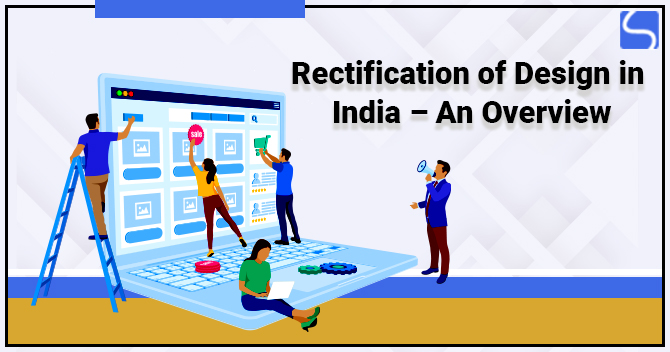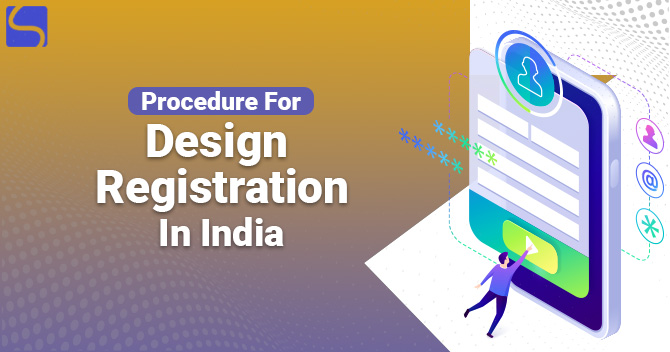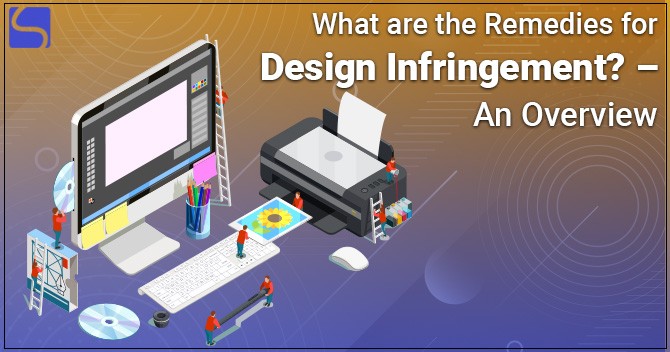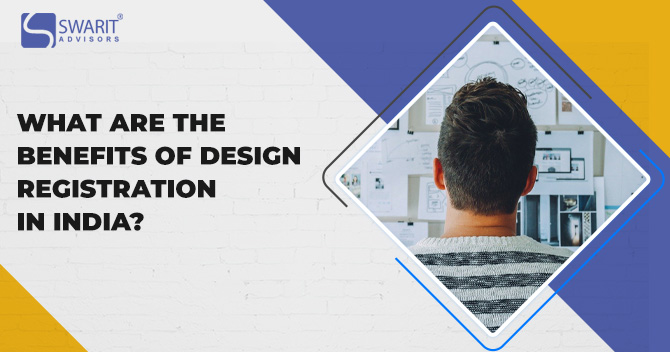Rectification of Design in India – An Overview

Karan Singh | Updated: Jul 17, 2021 | Category: Design
In India, provisions concerning the rectification of Design are given in the Design Rules, 2001 and the Design Act, 2000. The Design Controller is the primary individual accountable for executing the procedure of rectification of Design in India. The proceedings, when are finally over, the Controller’s decision is required to be published in the Office Journal. The individual aggrieved can file an application for the Design Rectification. Scroll down to check the complete process for the rectification of Design in India.
Table of Contents
Meaning of Design under the Design Act, 2000
Protection of Design is provided for a shape, configuration, surface pattern, colour, or a combination of these, which, when applied to an operational article, increases or produces and improves the visual appearance of the Design, be its 2-D or 3-D article.
Under the Design Act, 2000, the protection of Industrial Designs is a type of IPR (Intellectual Property Right) that provides the exclusive rights to make, sell, use articles that show the safeguarded Design to a part of selected individuals only. Protection rights for a Design are only furnished for a time period of ten years, and that can be renewed once for an extra time period of five years. In India, to obtain Design Registration, the same has to be registered with the Design Office.
Necessities for Design Registration in India
Following are some vital requirements for Design Registration in India:
- The Design should be proficient to be judged only by the eye;
- The Design shouldn’t be disclosed to the public at massive in India or elsewhere in the globe by prior use or a prior publication or in any other way;
- The Design should be applied to the work by an industrial process;
- The Design shouldn’t comprise any Trademark or artistic creation or property mark as mentioned under the Copyright Act and the Trademark Act;
- The Design should be significantly different from designs or a combination of designs that have already been registered or exists or revealed to the people at large;
- The Design should be utilised in the article by an industrial procedure;
- The Design shouldn’t comprise any of the entire functional features;
- The Design should be unique or new;
- The features of Design should be visible;
- The Design shouldn’t comprise any shocking matter or obscene;
Rectification of Design – Meaning
The provisions concerning the rectification of Design in India are given under Section 31 of the Design Act, 2000, along with the Rules 39 & 40 of the Design Rules, 2001. In India, the Rectification of Design is filed in Form-17 as given in the Design Act, 2000 and the Design Rules, 2001. An individual can file an application for the Rectification of the Design Registrar.
The application for Design Rectification can be filed on the following grounds:
- Non-insertion or error of any entry;
- Error or defect in any entry;
- The entry was made without enough cause;
- Entry remained wrongly on the Design Register.
The Rectification of Design can be done by way of expunging, varying, or making any entry. Design Rectification doesn’t comprise the Design Cancellation.
Procedure for Rectification of Design in India under the Design Act, 2000
Following is the procedure for Rectification of Design under the Design Act, 2000 and Rules, 2001[1]:
- On the application receipt for the rectification of Design, the Design Controller should inform all the individuals whose names are entered in the Design Register as all these were having a design interest. Such a rectification application is also required to be published in the Patent Journal.
- Any individual interested in the registered Design can give an opposition notice to such an application for the Rectification of Design within three months of time-period from the date on which the application was published in the journal.
- The challenger is required to leave the written statement with the relevant evidence. The challenger is also needed to begin the nature of their interest and the fact on which the challenger bases their case & is seeking aid. The challenger is required to file their written statement with all the other required documents within 14 days of giving the opposition notice.
- The Design Controller must forward a copy of the opposition notice together with the written statement & the supporting evidence to the candidate of the application for Design Rectification within 15 days from the receipt date of the statement & relevant evidence.
- Suppose the candidate wants to challenge the opposition notice. In that case, they have to file at Patent Office, Kolkata, a counter statement and all required relevant evidence, if any, and should set forth all the sensible grounds upon which he or she is aim to challenge the notice filed by the challenger within one month from the date on which the suggestion by the Design Controller was given, and deliver a copy of such counter-statement to the challenger simultaneously. The time duration of one month can be extended by the Design Controller. The extension can be provided up to a maximum of three months.
- After the counter statement’s receipt and supporting evidence from the candidate of the application for Design Rectification, the challengers can file their reply statement & relevant evidence by way of affidavits within one month from the delivery date of the counter-statement of the registered owner and the relevant evidence. The response evidence of the opponent should be severely limited to subject matters in the evidence given by the candidate. This duration of one month can be extended by the Design Controller up to three months. The challenger is required to deliver a copy of their statement & relevant evidence to the candidate at the same time.
- No extra evidence should be delivered by any parties to the proceedings, except with the leave/direction of the Design Controller.
- Where any document which is filed & is in a language other than English and is mentioned in any of the relevant evidence or statement, an attested translation in copy in English is required to be provided.
- Once the filing of statement and evidence is completed by the candidate and challenger, the Design Controller should give at least ten days of hearing notice of both the parties.
- On receiving the hearing notice, if either of the parties wants to be heard, such party have to file an intention notice to attend the hearing in Form 20 along with the fees provided for the same.
- Suppose either of the party is aiming to depend on any publication at the hearing that is not described in the petition for Design Cancellation, any relevant evidence or statement. In that case, they should give to the other party & the Design Controller notice of such intention there, along with the details of publication. Such an intention notice should be given at least fifteen days in advance by the party.
- After hearing both parties or if neither of the party wishes to be heard, then without a hearing, the Design Controller should decide the application filed for Design Rectification and issue a speaking order for the same.
- The final decision of the Design Controller must be informed to both the parties and is required to be published in the journal.
Conclusion
The Rectification of Design is given in the Design Act, 2000 to make any modifications in the Design if there is any inconsistency in the Design. The process of Design Rectification can be only initiated once the Design Registration is filed. The Design Registration in India can furnish vital benefits to the business, comprising ownership of exclusive rights to manufacture & sell the Design. This will permit the registered owner of Design to exclude all the opponents from the market.
Read our article:Renewal and Restoration of Design in India – An Overview














